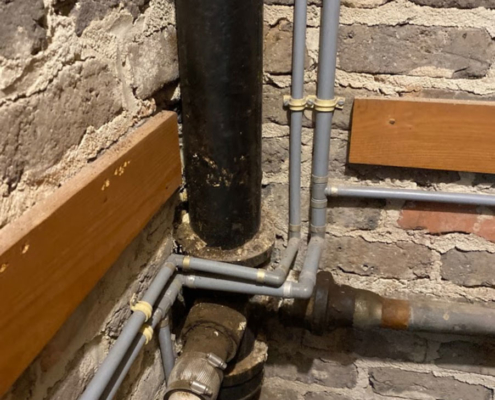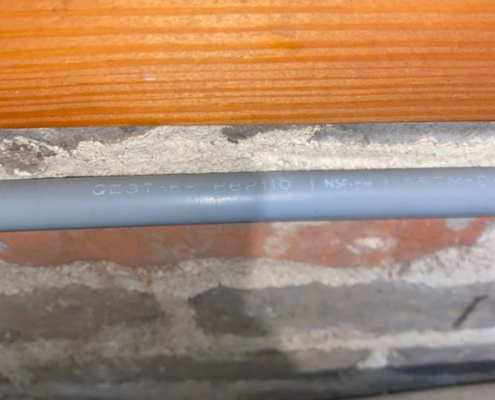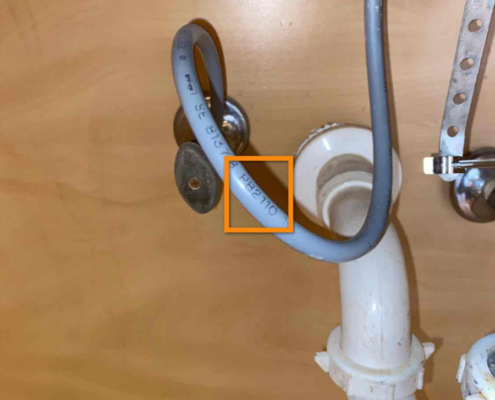Polybutylene pipes in the home and why they are a problem
Polybutylene, or “PB” was widely used as supply piping in homes from 1978 to 1995. Polybutylene was used as a substitute to copper due to its ease of installation and low material cost. Dubbed “the pipe of the future,” it was mainly installed in the southern portion of the U.S., where residential construction boomed through the 1980s and mid-1990s. It can also be found in the Mid-Atlantic and Pacific Northwest. Some experts predict that it may have been installed in as many as 10 million homes.
Despite its widespread use and popularity, multiple lawsuits were filed throughout the 1980s stating that the pipes were failing and causing hundreds of millions of dollars in property damage. Although polybutylene manufacturers have never admitted that the product is defective, they have agreed to fund a Class Action settlement with a minimum amount of $950 million. The period for filing a claim ended in 2007.
How to tell if you have polybutylene pipes
We check visible areas of the home for polybutylene piping during our home inspections and report its presence when discovered. PB is most easily observed where pipes come out of the walls at the water heater, under sinks and behind toilets; or as the supply hose between valves and fixtures under sinks and at toilets. PB can also be found at the water meter or main water shutoff valve. Below are a few tips to identify polybutylene, so you can check these areas for yourself:
- Look for a flexible, gray pipe with copper-colored fittings. Gray is the most common color, but polybutylene also came in blue or black
- Polybutylene is usually stamped with the code: “PB2110”
- It is usually 1/2” to 1” in diameter
- It is not used for waste, drain or vent piping
Spotting PB can sometimes be difficult due to the short length of pipe protruding from the wall. Often times these pipe protrusions are covered by an escutcheon ring or dirt and debris.

Polybutylene supply pipes (gray)

“PB2110” stamp

Polybutylene fixture supply hose
Why do polybutylene pipes fail?
While the exact cause of PB failure is unknown, it is believed that oxidants (such as chlorine) in public water systems react with the polybutylene, causing it to scale, flake and become brittle. Micro-fractures develop and the structural integrity of the piping becomes compromised, which can lead to sudden failure, causing water damage to the building and personal items. Other factors, such as improper installation, are also believed to contribute to these failures, but it is more or less impossible to diagnose installation problems in an entire plumbing system.
What if my home has polybutylene pipes?
If you find polybutylene pipes in your home, or if your home inspection report indicates the presence of polybutylene plumbing, it should be replaced. PB that is discovered at the supply hoses between valves and fixtures is typically an easy, inexpensive repair for a professional plumber. PB that is discovered to be the water supply piping to the house is a more difficult and costly repair. Contact a professional plumber to further evaluate and determine replacement costs. Insurance companies view polybutylene as a high risk due to its failure rate, so you should also contact your provider to get details about insuring a home with polybutylene plumbing.
Call or Email Us Today!
Buying or selling a home in the Jacksonville FL area? Our detailed home inspection consists of a thorough examination of all systems and components of the home. See one of our sample home inspection reports and read our 5-star home inspection Jacksonville FL reviews. We’re always here to answer any questions, whether it’s weeks, months or years after your home inspection. Let our local, Jacksonville FL home inspectors help you make an informed decision.
Bold City Home Inspections provides home inspection services to all of Duval, St. Johns, Clay and Nassau counties. Click the button below for a FREE, no-obligation home inspection quote:
Navigation
Business Information
Atlantic Beach, FL 32233
Hours:
Mon – Fri 8am – 6pm
Sat – Sun 8am – 3pm
Home Inspector Proudly Serving:
Home Inspector Blog
- Common Home Inspection Findings in Homes Built Before 1950
- Benefits of Air Quality Testing
- Things to Look for When Touring a Home
- How Long do Asphalt Roof Shingles Actually Last?
- How Long Does a Home Inspection Take?
- Top Tips to Reduce HVAC Energy Costs and Lower Your Energy Bill
- A Basic Guide to Swimming Pool Leaks for Pool Owners




